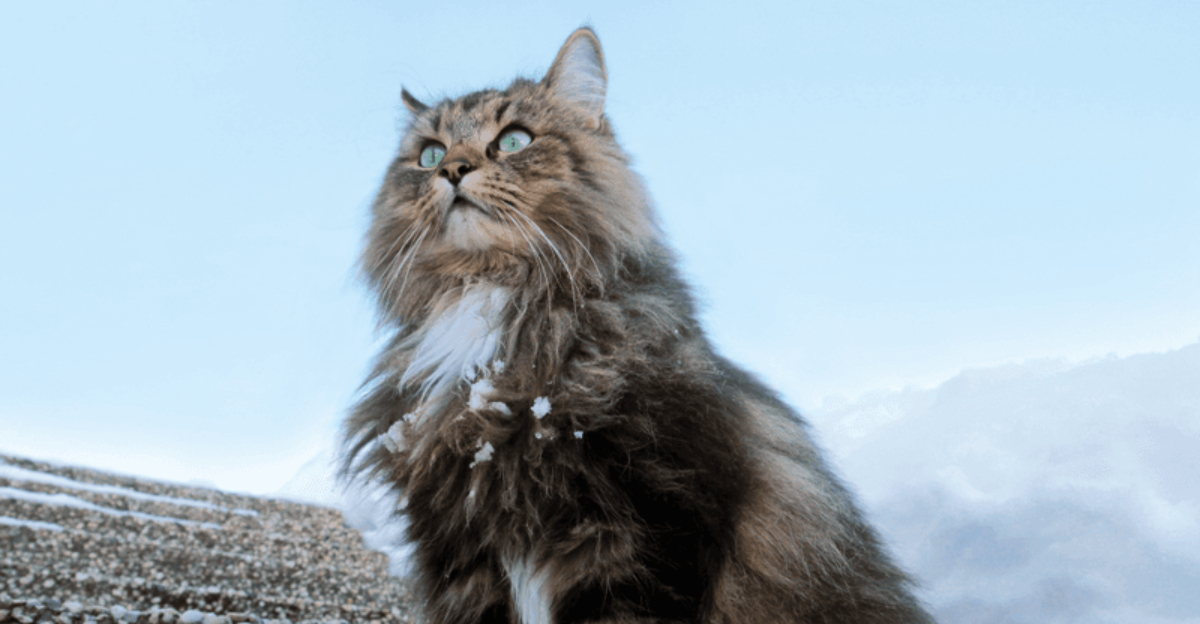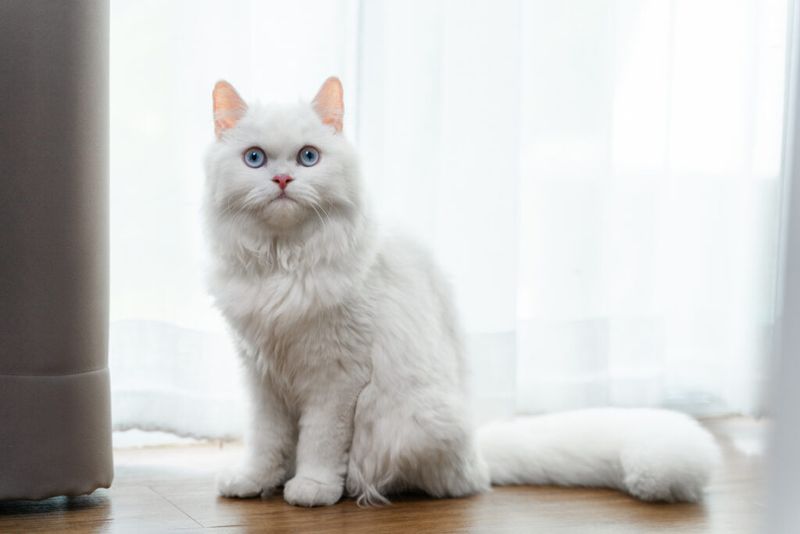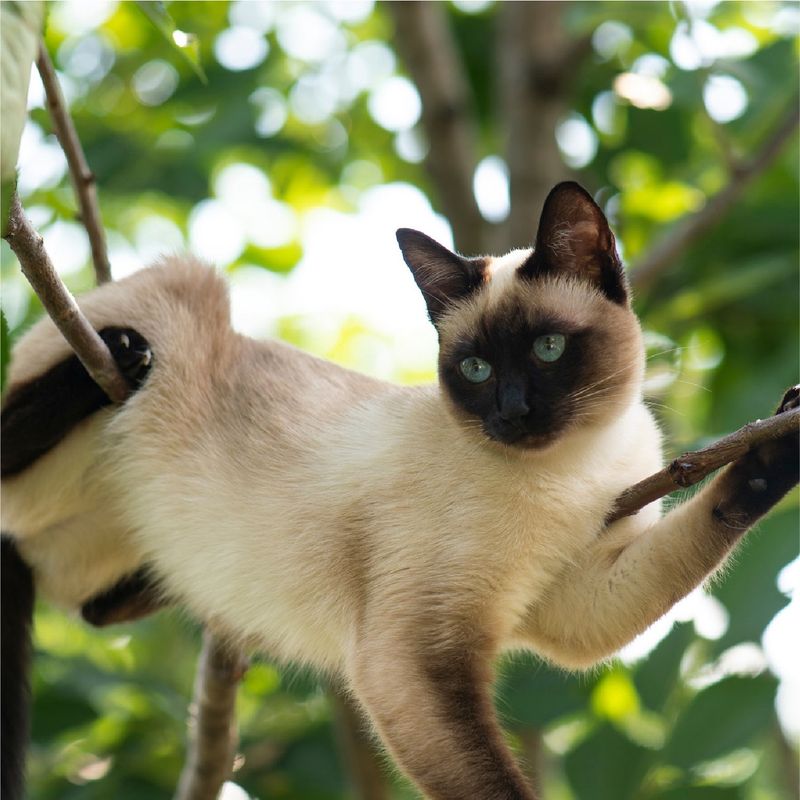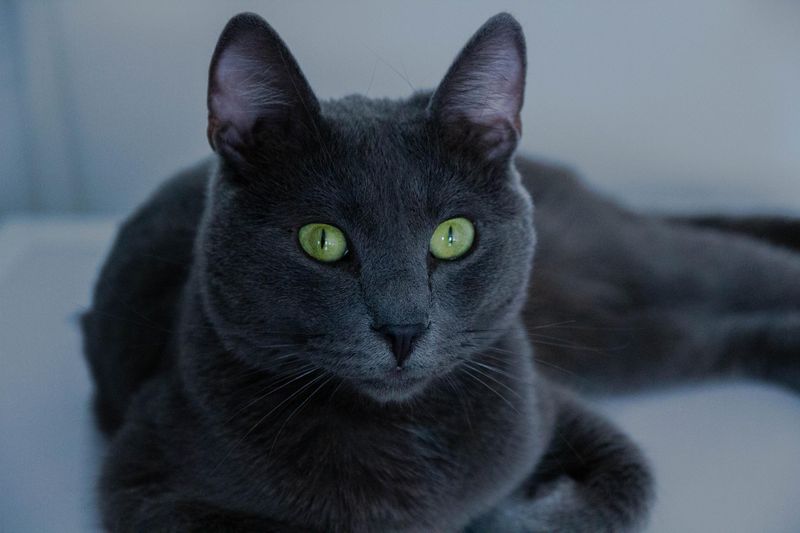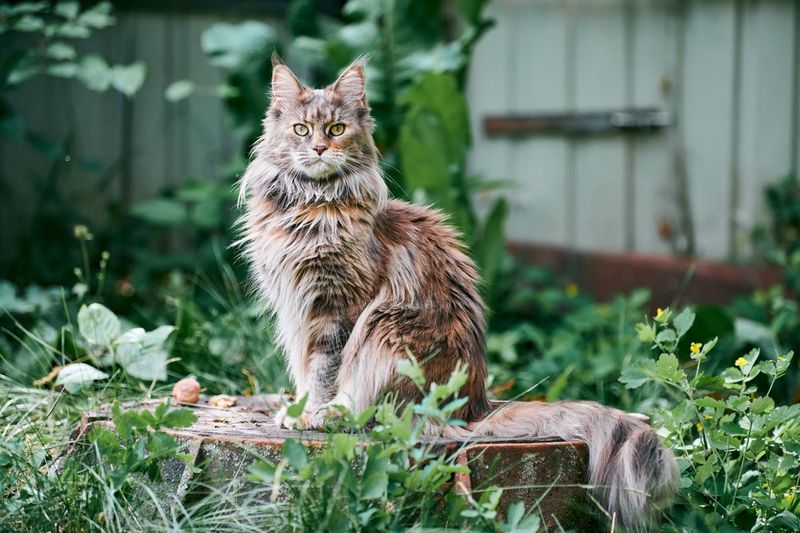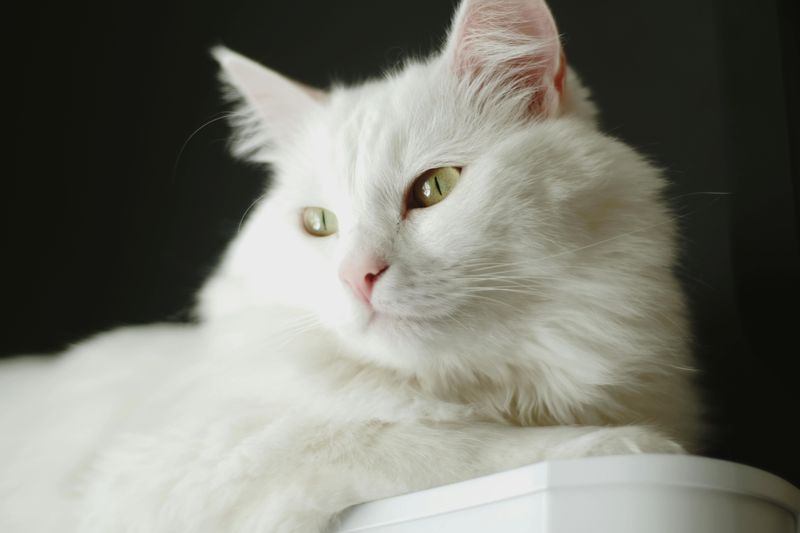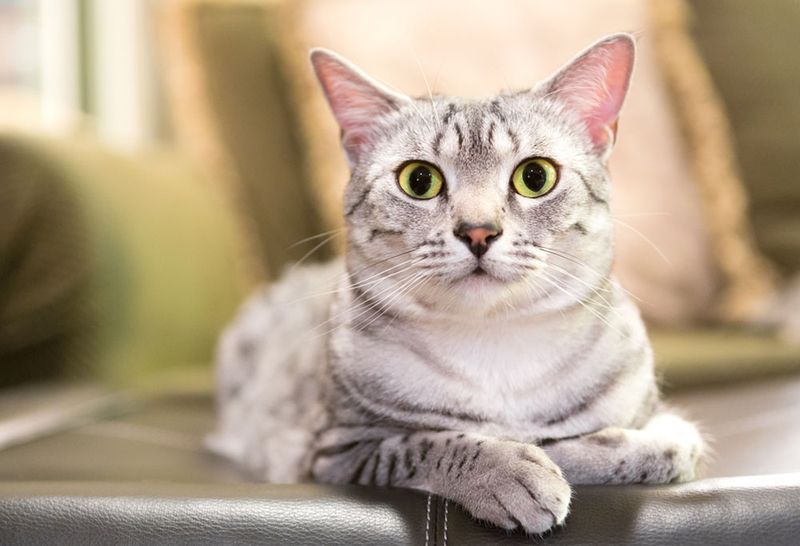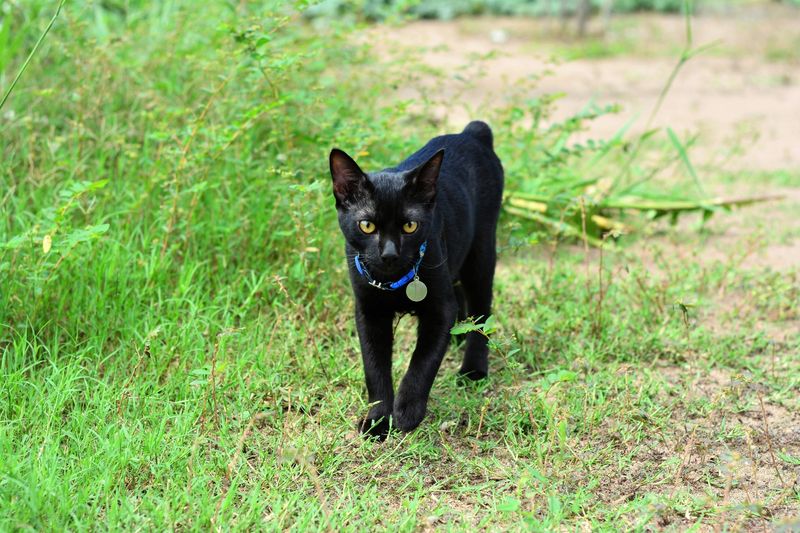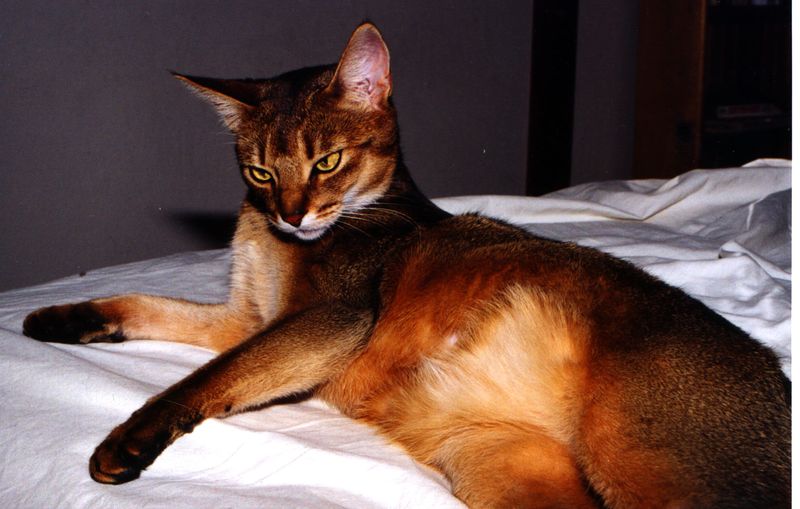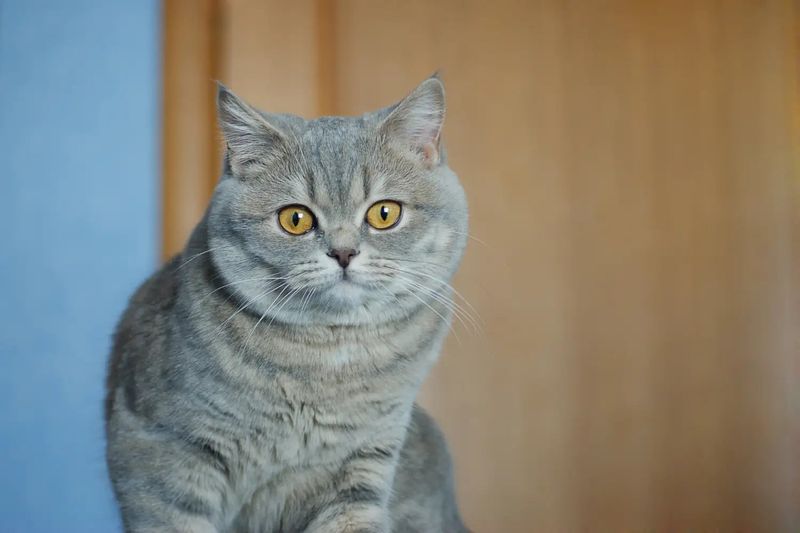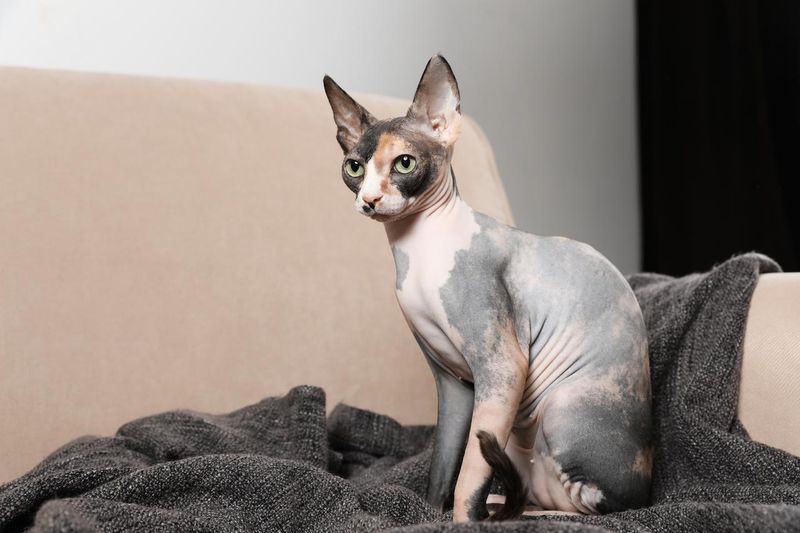📖 Table of Content:
Cats have been companions to kings, queens, and nobles for thousands of years. From ancient Egypt to medieval Europe and imperial Asia, certain cat breeds were specifically developed to grace the laps of royalty. These aristocratic felines haven’t forgotten their blue-blooded heritage, often displaying regal attitudes and expecting the finest treatment from their human servants.
1. Persian
The glamorous Persian cat once roamed the palaces of Iranian royalty as early as the 1600s. Their luxurious coats and placid temperaments made them favorites among European nobility who received them as exotic gifts from travelers to the East.
Queen Victoria’s love for these majestic felines helped popularize them throughout Victorian England. Persians still carry themselves with the quiet dignity of their royal heritage, expecting regular grooming and comfortable accommodations. Modern Persians maintain their aristocratic air, often finding the perfect sunbeam throne from which to survey their domain while silently judging anything they find beneath their standards.
2. Siamese
Originally from Siam (now Thailand), these vocal beauties were treasured by Siamese royalty who believed they housed the souls of departed royal family members. Palace cats were so revered that stealing one was punishable by death. The first Siamese arrived in Europe in the 1880s as gifts to diplomatic officials.
Their striking color points and piercing blue eyes immediately captivated Western nobility, including Queen Victoria. Siamese cats haven’t forgotten their prestigious origins. Their demanding vocalizations and expectant attitudes suggest they’re still waiting for royal treatment, complete with prompt service and constant attention from their human staff.
3. Russian Blue
Russian Blues allegedly descended from cats kept by Russian Czars, particularly in the courts of Catherine the Great. Their plush, silvery coats were said to resemble the valuable furs worn by Russian nobility, making them living symbols of wealth and status.
British royalty embraced these elegant felines after they were introduced to England in the late 1800s. The cats’ reserved demeanor and quiet intelligence suited the formal royal households perfectly. Today’s Russian Blues maintain their aristocratic bearing with dignified posture and selective affection. They observe their surroundings with emerald eyes that seem to hold centuries of royal secrets, choosing their human companions with careful consideration.
4. Maine Coon
Legend claims Maine Coons descended from Marie Antoinette’s Turkish Angoras, which supposedly escaped to America during her planned flight from France. These gentle giants became the preferred mousers of New England’s elite families who appreciated both their hunting prowess and sociable nature.
Their luxurious ruffs and majestic tails earned them the nickname “the gentle giants of the cat fancy.” Early American aristocracy showcased these impressive felines at the first cat shows in the United States. Maine Coons carry themselves with the confident grace of their noble heritage. Their chirping conversations and sociable personalities show they expect to be treated as valued family members rather than ordinary pets.
5. Turkish Angora
The elegant Turkish Angora graced the palaces of Ottoman sultans for centuries. Their silky white coats and graceful movements made them living treasures within the imperial harem, where they were protected and bred with great care.
The French aristocracy fell in love with these cats when they arrived in Europe in the 1600s. Marie Antoinette reportedly owned several, contributing to their association with luxury and refinement. Turkish Angoras carry their tails high like royal standards. Their intelligent eyes and alert expressions suggest they’re fully aware of their prestigious lineage, often choosing the highest perch from which to oversee their household with benevolent authority.
6. Egyptian Mau
Ancient Egyptian royalty worshipped these spotted beauties as living embodiments of the goddess Bastet. Tomb paintings dating back 3,000 years depict these distinctive cats seated beneath the chairs of pharaohs and queens, enjoying privileged positions in the royal household.
The natural spots on their coats were considered sacred markings, signifying their divine connection. Egyptian nobility protected these cats by law, with harsh penalties for anyone who harmed them. Modern Egyptian Maus retain their athletic grace and watchful intelligence. Their alert expressions and quick movements suggest they’re still keeping tabs on potential threats to their royal persons, just as they did for the pharaohs millennia ago.
7. Birman
Known as the “Sacred Cat of Burma,” Birmans were temple companions to Buddhist priests who believed these cats carried the souls of departed masters. Their distinctive white paws were said to have been blessed by a blue-eyed goddess, marking them as divine beings. French aristocrats introduced these mystical felines to Europe in the early 1900s.
Their gentle temperament and striking appearance made them instant favorites among the nobility who could afford such exotic pets. Birmans move with serene confidence, as if still carrying sacred responsibilities. Their thoughtful blue eyes and patient demeanor suggest they’re accustomed to reverence, expecting to be treated with the same respect their ancestors received in ancient temples.
8. Japanese Bobtail
Japanese imperial courts treasured these distinctive short-tailed cats for over a thousand years. Their unique bobbed tails, resembling pom-poms, were considered lucky by Japanese nobility who kept them as palace pets to ward off evil spirits. The famous tri-colored “Mi-Ke” (three-fur) pattern was especially prized by the imperial family.
These cats inspired the iconic Maneki Neko (beckoning cat) figurines that still symbolize good fortune throughout Japan. Japanese Bobtails retain their playful intelligence and athletic abilities. Their expressive faces and sociable personalities show they expect to be included in all household activities, just as they participated in court life centuries ago.
9. Norwegian Forest Cat
Norse mythology tells of these magnificent felines pulling the chariot of Freya, goddess of love and fertility. Viking nobility prized these hardy cats for their hunting skills and thick, weather-resistant coats that symbolized survival against harsh Nordic elements.
Norwegian royalty officially recognized these cats as a national treasure in the 1930s, saving them from extinction. King Olav V became their patron, ensuring the preservation of this ancient breed. Modern Norwegian Forest Cats carry themselves with the confidence of their Viking heritage. Their imposing size and tufted ears give them a wild, majestic appearance as they survey their territory with the same watchful gaze their ancestors used while sailing with Nordic kings.
10. Abyssinian
Resembling the sacred cats depicted in ancient Egyptian art, Abyssinians are believed to descend from the revered felines of the pharaohs. Their ticked coats and lithe bodies mirror images found in royal tombs dating back thousands of years. British colonial officers brought these regal cats to Europe in the 1800s, naming them after Abyssinia (now Ethiopia).
Their exotic appearance and lively intelligence made them favorites among aristocratic cat fanciers seeking connections to ancient civilizations. Abyssinians move with the alert grace of cats who once patrolled palace grounds. Their curious expressions and active nature suggest they’re still fulfilling their royal duties, investigating every corner of their domain with the same dedication shown to their ancient masters.
11. British Shorthair
The aristocratic British Shorthair rose to prominence during Queen Victoria’s reign when cat shows became fashionable among England’s upper classes. Their plush coats and sturdy builds epitomized British ideals of strength and dignity. The royal family’s patronage of cat fancy events helped establish these cats as symbols of British refinement.
Their famous “Cheshire Cat” grin became immortalized in Lewis Carroll’s “Alice’s Adventures in Wonderland,” a favorite at Victorian court readings. British Shorthairs maintain their dignified demeanor with characteristic British reserve. Their round, expressive faces and patient temperaments suggest they’re still upholding the proper standards of behavior established during their days as favored companions to lords and ladies.
12. Sphynx
Despite their modern appearance, hairless cats were prized by Aztec royalty who believed their warm bodies could heal ailments. The contemporary Sphynx breed, developed in the 1960s, quickly attracted celebrity and aristocratic admirers fascinated by their exotic appearance. European nobility embraced these unusual felines as exclusive status symbols.
Their rarity and distinctive look made them conversation pieces at high society gatherings where unusual pets were markers of wealth and sophistication. Sphynx cats display their royal heritage through demanding personalities and expressive behaviors. Their need for warmth often leads them to drape themselves across their owners like living stoles, expecting the heated comfort once provided in royal bedchambers.
